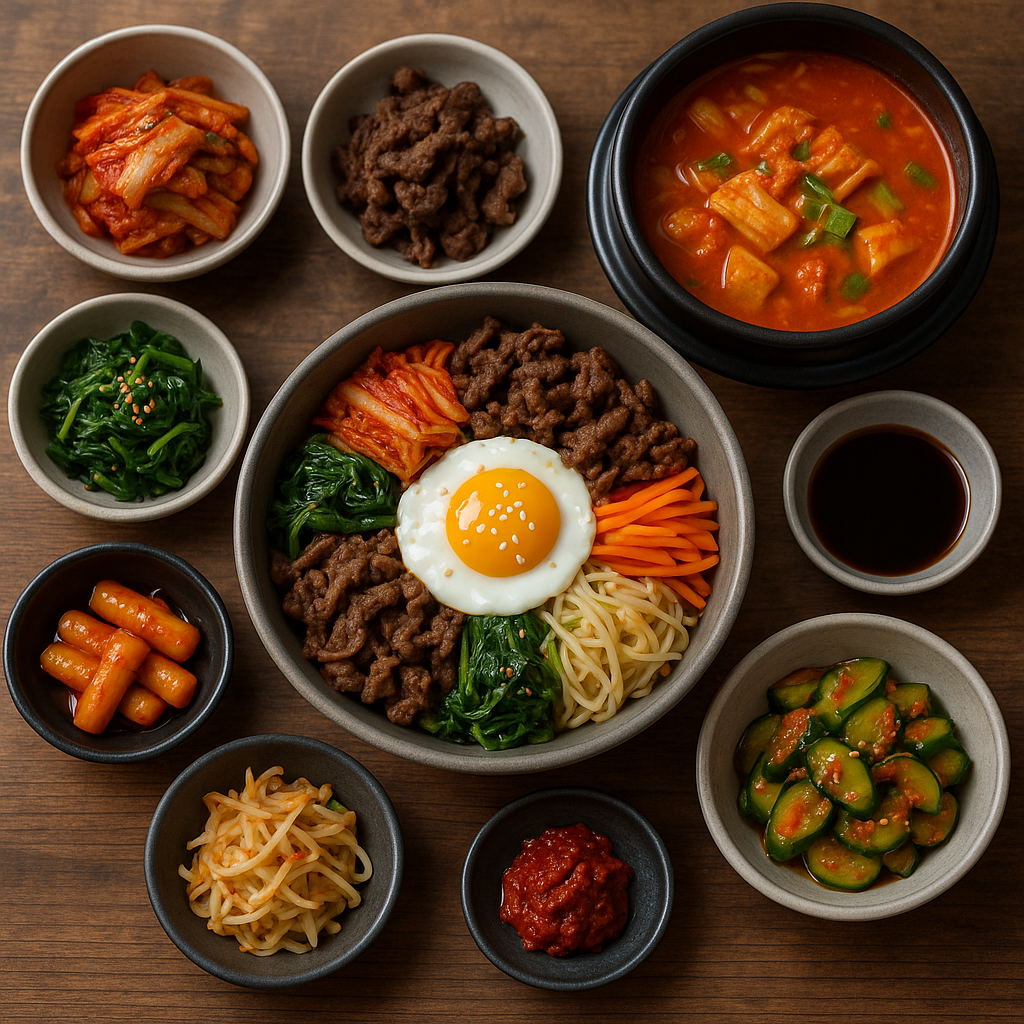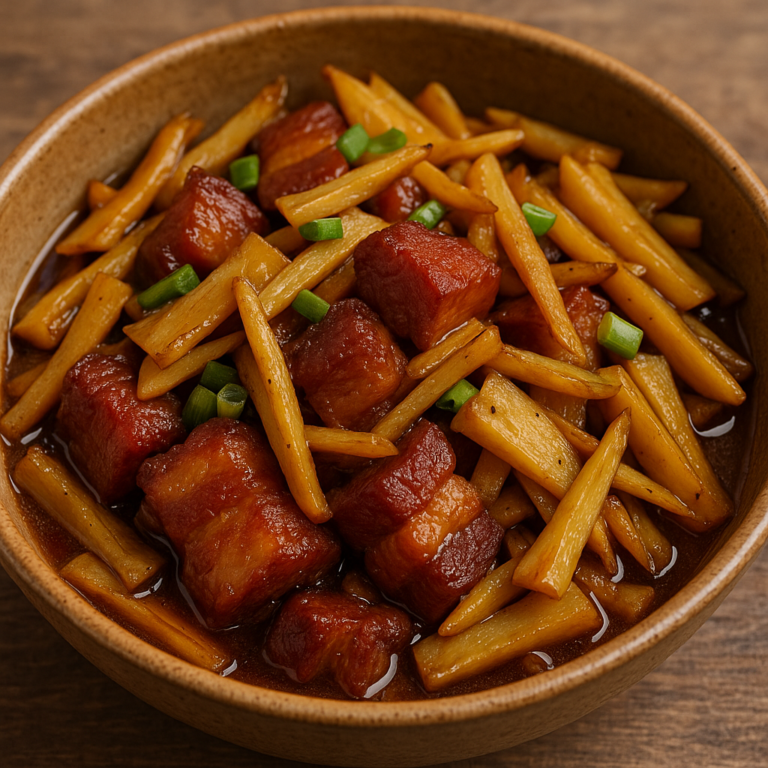Introduction: The Rise of Korean Cuisine in Global Food Culture
Korean food popularity, Korean culinary influence, global food trends, K-food movement
In recent years, Korean cuisine has surged in popularity, becoming a defining force in global food trends. From fiery kimchi and savory bulgogi to the comforting warmth of bibimbap, Korean food—often referred to as K-food—has captivated palates worldwide. This global embrace of Korean culinary culture reflects more than just changing tastes; it signals a broader cultural movement powered by media, migration, and the international success of Korean pop culture. As Korean restaurants open in major cities across the globe and Korean ingredients become staples in international kitchens, the influence of Korean cuisine is reshaping the global food landscape. The K-food movement is transforming what people eat and how they think about food, identity, and cultural exchange.
Top 5 Korean Food Trends You Need to Know About Right Now
Korean BBQ trends, modern bibimbap variations, spicy Korean fried chicken, kimchi innovations, and convenience foods in Korea
Korean BBQ Trends
Premium Cuts & Aging: Restaurants increasingly feature dry-aged beef, Hanwoo (Korean native cattle), and even Wagyu for elevated experiences.
DIY & Automation: Grills with automated temperature control and smokeless systems are common, with some chains offering robotic servers and meat-turners.
Fusion Flavors: Marinades now incorporate truffle, yuzu, or gochujang-butter blends.
Vegan BBQ: Soy-based “meat” like ZIKOOIN’s Unlimeat is gaining ground at upscale vegan K-BBQ spots.
Modern Bibimbap Variations
Grain Alternatives: Substituting rice with quinoa, barley, or cauliflower rice.
Global Fusion:
Mexican-style bibimbap with avocado, corn, and chipotle gochujang.
Japanese-Korean hybrids using sushi rice and sashimi-grade fish.
Health-focused Bowls: Incorporation of superfoods like kale, beetroot, tofu, and fermented chickpeas.
Banchan-Inspired Builds: Bibimbap bowls styled with 4–6 curated banchan toppings for an Instagrammable look.
Spicy Korean Fried Chicken (Yangnyeom & Beyond)
Heat Levels Rising: Variants now include Carolina Reaper and ghost pepper sauces.
Double-Frying 2.0: Innovations in batter using rice flour blends for extra crunch.
Flavor Expansion:
Cheese powder, garlic-soy truffle, or honey-butter soy.
Kimchi-infused batter for added depth.
Boneless & Snackable: Nuggets, sliders, and lollipop wings are gaining popularity.
Kimchi Innovations
Non-traditional Ingredients:
Kimchi with apple, mango, beet, or CBD oil.
Vegan kimchis using miso or tamari instead of fish sauce.
Kimchi-Based Products:
Kimchi aioli, kimchi hummus, kimchi pasta sauce, and even kimchi soda.
Fermentation Tech: Controlled environments using smart fermentation chambers are enabling consistent quality and global export.
Convenience Foods in Korea
Meal Kits & HMR (Home Meal Replacements): Rapid growth with high-end packaging, microwave-ready Korean BBQ, and chef-collab kits.
24/7 Convenience Stores:
Selling full meals like tteokbokki, jajangmyeon, and samgyeopsal trays.
Self-heating lunchboxes and instant soft tofu stew.
Frozen & Ready-to-Cook Foods: Expansion into K-cuisine exports like frozen japchae, mandu, and kalguksu.
Smart Vending Machines: Featuring bibimbap bowls, K-chicken, and gimbap rolls, especially in subway stations and campuses.
The Impact of K-Pop and K-Dramas on Korean Food Trends
K-drama recipes, celebrity chefs, food culture in Korea, and pop culture influence on cuisine
K-Drama-Inspired Recipes
Food as Storytelling: K-dramas often spotlight meals to convey emotion, tradition, or character bonding. These dishes often spark food trends.
“Crash Landing on You” → Hotteok (sweet Korean pancakes) and ramyeon with cheese surged in popularity.
“Hospital Playlist” → Tteokbokki, gimbap, and late-night Korean soul food.
“Let’s Eat” series → Celebrated everyday dishes like jajangmyeon, bossam, and samgyetang, encouraging viewers to replicate at home.
Trending Drama-Inspired Dishes:
Makgeolli with jeon (pancakes) on rainy days (seen in multiple dramas).
Instant ramyeon rituals (metal pot, raw egg, paired with beer or soju).
👨🍳 Celebrity Chefs in Korea
Baek Jong-won: Korea’s most influential food entrepreneur, blending education with entertainment. Known for fusion comfort food and street food revival.
Lee Yeon-bok: A master of Korean-Chinese cuisine (e.g., jjajangmyeon, tangsuyuk), often appearing on variety shows.
Choi Hyun-seok: A fine-dining showman, popular for flamboyant plating and European-Korean fusion dishes.
YouTube & SNS Chefs: Creators like Chef Paik, TabiEats Korea, and Cooking Haru reach global fans with simplified Korean cooking.
🇰🇷 Food Culture in Korea
Collective Eating: Meals emphasize sharing, with communal dishes like jeongol, samgyeopsal, and steamed eggs.
Food & Mood: Specific dishes tied to emotions or events:
Seaweed soup (miyeok-guk) for birthdays and postpartum.
Black noodles (jajangmyeon) on Black Day (for singles).
Café Culture: A flourishing scene offering everything from dessert cafés with soufflé pancakes to K-pop-themed cafés with fan events.
Late-Night Dining: Food delivery and pojangmacha (street food tents) are integral to nightlife.
🌟 Pop Culture Influence on Cuisine
K-pop Crossover:
Idol-endorsed snacks (like BTS x McDonald’s or BLACKPINK’s instant noodles) drive sales and fandom food trends.
K-pop idols often share favorite recipes on V-Live or YouTube, prompting fan recreations.
Fandom Food Trends:
Special café menus during comebacks or birthdays (e.g., fan-made cakes, idol-themed drinks).
Color-themed bento boxes or snacks reflecting group identities.
Collabs & Limited Editions:
Food brands partner with dramas or idols to release limited-time flavors, collectible packaging, and AR-based experiences.
Health and Wellness: How Traditional Korean Foods Are Making a Comeback
fermented foods benefits, healthy eating trends in Korea, traditional recipes revival, superfoods from Korea
Fermented Foods Benefits (Korea’s Gut-Healthy Staples)
Fermentation is at the heart of Korean cuisine, offering both flavor and significant health benefits:
Kimchi: Rich in probiotics, vitamin C, and antioxidants; linked to improved gut health and immunity.
Doenjang (fermented soybean paste): Contains isoflavones, peptides, and enzymes that support digestion and heart health.
Ganjang (soy sauce) & Gochujang (fermented red chili paste): Though salty, both provide amino acids and aid in metabolism regulation.
Makgeolli (fermented rice wine): Contains lactic acid bacteria and dietary fiber; sometimes consumed in small amounts for digestive benefits.
💡 Modern brands are now developing low-sodium kimchis and probiotic-rich gochujang to meet global health trends.
🥗 Healthy Eating Trends in Korea (2024–2025)
Korea’s health-conscious consumers are driving demand for clean, functional, and personalized foods:
Low-Carb & Keto-Adapted Korean Dishes: Bibimbap with cauliflower rice, ssam wraps with tofu, or keto tteokbokki using konjac noodles.
Plant-Based Boom: Rapid growth in vegan Korean meals, especially meatless mandu, soybean bulgogi, and vegan kimchi.
Immune-Boosting Ingredients: Ginseng, garlic, jujube, and honey are integrated into daily meals and drinks.
Convenience with Nutrition: HMR (Home Meal Replacements) now emphasizes calorie control, clean labels, and functional ingredients.
🧑🍳 Traditional Recipes Revival (Heritage on the Plate)
Korea is seeing a strong movement to revive “Hansik” (traditional Korean cuisine), with a modern twist:
Temple Food Renaissance: Focus on natural ingredients, no meat, seasonal vegetables, and mindful cooking (popularized by chefs like Jeong Kwan).
Jang Culture Resurgence: Younger Koreans return to home fermentation—making their doenjang, ganjang, and gochujang in earthenware jars.
Old-School Dishes Return: Meals like cheonggukjang (strong soybean stew), boribap (barley rice), and siraegi-jjim (dried radish greens) are gaining traction for their health appeal.
Homecooking Movements: YouTube and TikTok are full of family recipe revivals, especially from the Jeolla and Gyeongsang regions.
🌿 Korean Superfoods
Native ingredients are gaining traction both domestically and globally:
Perilla (Deulkkae): High in omega-3s and antioxidants; used in oils, powders, and salads.
Jujube (Daechu): Boosts immune health and helps reduce stress; often used in teas and porridges.
Bokbunja (Black Raspberry): Rich in polyphenols and vitamin C; marketed in juices and fermented vinegar drinks.
Yuja (Yuzu): Loaded with vitamin C, used in yuja-cha (honey citron tea) and vinaigrettes.
Gochugaru (Korean chili flakes): Contains capsaicin, which aids metabolism and may reduce inflammation.
Cultural Fusion: The Blend of Korean Flavors with International Cuisines
Korean-Mexican fusion dishes, Asian fusion cuisine trends, global street food influences, and innovative restaurant concepts
🌮 Korean-Mexican Fusion Dishes
A staple of the global fusion movement, Korean-Mexican blends bring bold flavors and street-food appeal:
Korean Tacos: Filled with bulgogi, spicy pork, or galbi, often topped with kimchi slaw, gochujang crema, or pickled daikon.
Kimchi Quesadillas: Kimchi and cheese pan-grilled in tortillas with optional beef or tofu.
Bibimbap Burritos: Rice, seasoned veggies, gochujang, and protein rolled like a burrito.
Korean Elote: Grilled corn topped with gochujang mayo, sesame, and scallions.
Spicy Korean Nachos: Tortilla chips loaded with bulgogi, kimchi, cheddar, and a soy-chili drizzle.
🔥 Popularized by LA-based Kogi BBQ (Roy Choi), this style has gone global in pop-ups, food trucks, and casual dining spots.
🍜 Asian Fusion Cuisine Trends (2024–2025)
Kitchens across Asia and abroad are blending heritage with innovation:
Jap-Korean Blends: Gochujang ramen, kimchi sushi rolls, Korean tonkatsu with doenjang sauce.
Korean-Thai: Bulgogi pad Thai, tom yum ramen with kimchi broth, or Korean BBQ skewers with Thai peanut sauce.
Korean-Indian: Gochujang curry, kimchi paratha, and bibimbap biryani mashups.
Southeast Asian Additions: Using lemongrass, fish sauce, and coconut milk in Korean stews and noodles.
Dessert Fusion: Bingsu with Thai mango sticky rice, or matcha-kimchi cheesecake (yes, it exists in niche cafes).
🌍 Global Street Food Influences in Korea and Beyond
Korean street food continues to evolve, absorbing global flair:
Tteokbokki Reimagined: Served with cheese fondue, mala sauce, or in taco shells.
K-Chicken Waffles: Korean fried chicken on classic or kimchi-infused waffles.
Gimbap Variations: Mexican-style burrito gimbap, Greek gimbap with feta and tzatziki, or Vietnamese spring roll gimbap.
Hot Dog Hybrids: The Korean corn dog gets global stuffed with jalapeños, cheddar, or even ramen crusts.
Internationally, Korean-inspired dishes are entering street markets:
UK & US festivals often feature Korean bao buns, K-bbq skewers, and kimchi fries.
Southeast Asia has embraced Korean milk teas, street toast, and instant ramen stalls with creative toppings.
🍽️ Innovative Restaurant Concepts
Restaurants are pushing the limits of dining through tech, art, and cross-cultural menus:
K-Cuisine Tapas: High-end spots serve miniature takes on galbi-jjim, kimchi jeon, and yukhoe on tasting menus.
Rotating Concepts: Some Seoul venues change chefs or themes quarterly—e.g., from Korean-Japanese omakase to vegan temple food.
AI-Designed Menus: Using data and guest feedback to generate seasonal dishes (some chains in Seoul are experimenting with this).
Immersive Dining:
Hanbok experiences with traditional meals.
Themed interiors (K-pop idols, historical Korea, cyberpunk Seoul).
Food as Performance: Open kitchens with live fermentation, flame grilling, or interactive plating.
Where to Experience the Latest Korean Food Trends Locally and Online
Best Korean restaurants in Guwahati
🍽️ Top Korean Restaurants in Guwahati
If you’re craving authentic Korean flavors in Guwahati, consider these popular spots:
Conclusion: Embrace the Flavor Explosion of Current Korean Food Trends Today!
🥢 Conclusion: Embrace the Flavor Explosion of Current Korean Food Trends Today!
From sizzling Korean BBQ and fiery fried chicken to fermented superfoods and K-drama-inspired comfort meals, Korean cuisine is more than a trend—it’s a global culinary movement. Whether you’re exploring fusion dishes like Korean tacos, diving into gut-friendly fermented foods, or attending vibrant cultural food festivals, now is the perfect time to savor Korea’s bold, diverse, and innovative food scene.
Don’t just taste it—experience it. Cook it at home, order it online, or visit a local Korean eatery. Let the flavors, culture, and creativity of Korea redefine your plate today!
You can Also Check the Best Bike Accessories Shop In Guwahati




























